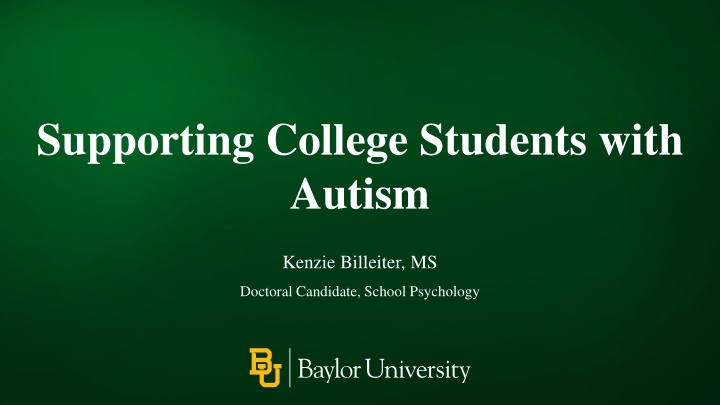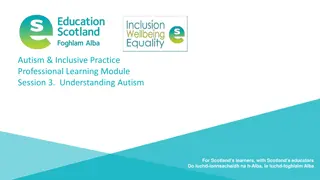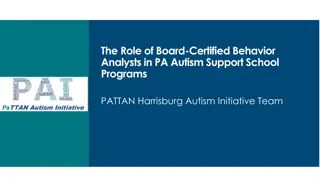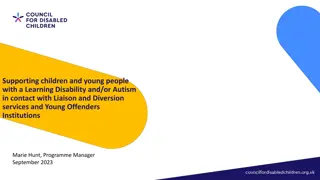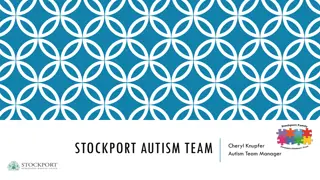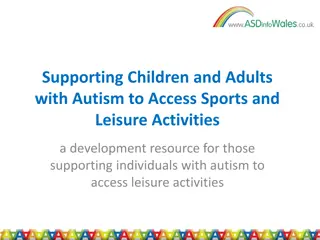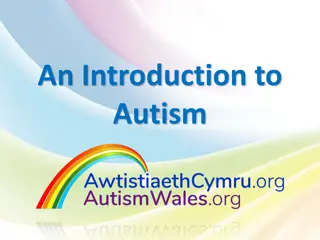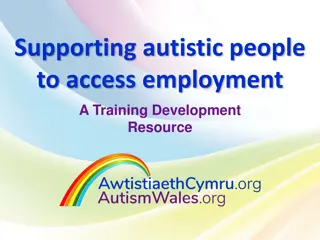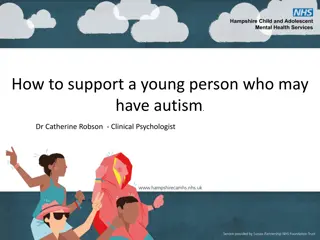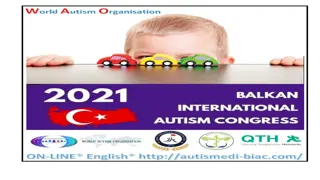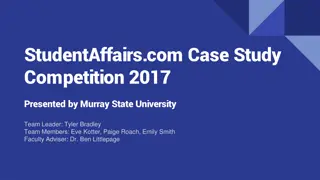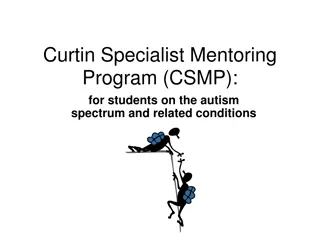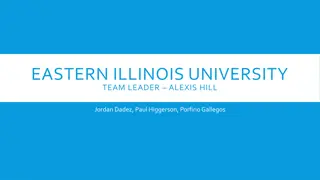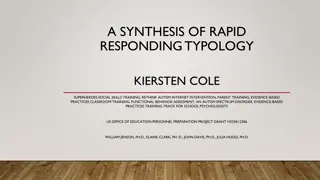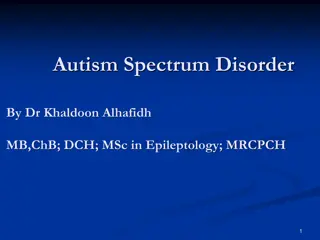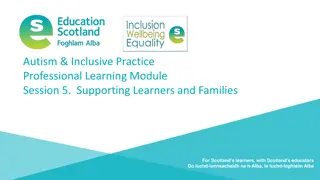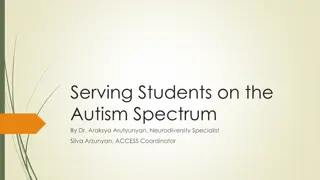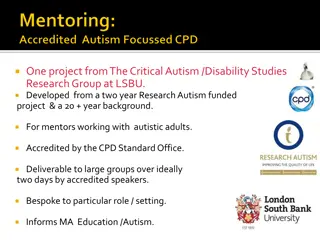Supporting College Students with Autism: Insights and Strategies
Kenzie Billeiter, a doctoral candidate in School Psychology, shares valuable insights on supporting college students with autism. The presentation covers aspects such as statistics at Baylor University, challenges faced by students on the spectrum, common issues, tips for working with them, and available resources. It emphasizes the importance of providing academic, behavioral, emotional, and social support to help these students succeed in higher education.
Download Presentation

Please find below an Image/Link to download the presentation.
The content on the website is provided AS IS for your information and personal use only. It may not be sold, licensed, or shared on other websites without obtaining consent from the author.If you encounter any issues during the download, it is possible that the publisher has removed the file from their server.
You are allowed to download the files provided on this website for personal or commercial use, subject to the condition that they are used lawfully. All files are the property of their respective owners.
The content on the website is provided AS IS for your information and personal use only. It may not be sold, licensed, or shared on other websites without obtaining consent from the author.
E N D
Presentation Transcript
Supporting College Students with Autism Kenzie Billeiter, MS Doctoral Candidate, School Psychology
Introduction and Background Welcome and thanks for being here! PhD candidate in School Psychology MA in Clinical Psychology and MS in School Psychology Worked at OALA for the past 4 years while completing doctoral coursework Provide academic, behavioral, emotional, and social support to students with autism through individual and group sessions as well as evidence-based curriculums
Agenda Welcome and Overview Baylor s Mission Statement Diversity at Baylor University Projected Rates of ASD at Baylor Statistics and Outcomes My Role at OALA Common Issues and Barriers Tips for Working with Students on the Spectrum Resources Discussion
Baylors Mission Statement The mission of Baylor University is to educate men and women for worldwide leadership and service by integrating academic excellence and Christian commitment within a caring community.
Diversity at Baylor University Baylor s overall student body is the most diverse ever at the University, with overall minority enrollment rising to about 34% Where do we stand with other kinds of diversity? How does our campus accommodate differences in cognitive processes?
Projected Rates of ASD at Baylor Rates of ASD in the US are around 1 in 44 (CDC, 2022) Baylor officially enrolled 20,709 students as of Fall 2022 Based on the CDC s rates, roughly 470 students at Baylor are on the spectrum! About 45 are registered with OALA to receive services for ASD About 20 request either weekly or biweekly meetings Others check in 2-3x a semester
Statistics and Outcomes Students with ASD are attending college at higher rates each year Increased risk for academic and perceived personal failure during their college years Decreased graduation and employment rates Increased chance of developing comorbid psychological disorders Primarily anxiety and depression The core features and the psychological characteristics of ASD, coupled with new pressures and demands of higher education, bring significant challenges to students with ASD Increasing independence, living in residence, navigating new social situations, adjusting to new classroom/lecture styles, etc.
My Role at OALA Provide mental, social, behavioral, and academic support for college students, specifically those on the spectrum This can take many forms: PEERS for Young Adults Weekly/Biweekly skills building with homework Weekly check-ins Social skills group Collaborating with other departments and professors Title IX, Counseling, Health Services, Engineering Working through adaptive skills Thinking about what s next Graduate school, career planning
Common Issues and Barriers Identity and not wanting to out themselves as someone with ASD Lack of a script for university life K-12 and college have vastly different structures Social dynamic Peer acceptance/rejection and dating Adaptive skills Laundry, cooking, hygiene, transportation
Common Issues and Barriers (cont.) Lack of primary support system Integrating the family while maintaining the autonomy of the student Finding a chosen family Finding community Proper documentation Late diagnosis, misdiagnosis, etc. Graduation and employment rates
Tips for Working with Students on the Spectrum Reason for referral This may be obvious, but their autism isn t always the reason they are seeking help Sometimes it can even function as a protective factor Ask about preferences on person-first language I approach this similarly to asking someone their preferred pronouns When in doubt, mimic their language Trying using neutral terms such as atypical or neurotypical The neurodiversity movement has been great about introducing new, more empowering terminology Avoid using terms like normal or high or low functioning, as these are not accurate and can be offensive
Tips for Working with Students on the Spectrum (cont.) Check that your space sensory-friendly Lights, textures, and smells What does autism look like for you? This acknowledges the variability within the spectrum and really opens the conversation such that the individual to express themselves instead of just describing a diagnostic label Can also give you a clearer idea of what resources may be most helpful (e.g., social, academic, behavioral) Reassess therapeutic techniques Research has shown that some common therapeutic/rapport-building techniques such as mirroring can have reverse effects on those with atypical cognitive processes I ve found that being straightforward and literal is often the best approach Offer them a script of what a meeting typically looks like and lay out each session beforehand
Resources Autism in Adulthood Research in Autism Spectrum Disorders Morgan Harper Nichols Autistic/ADHD artist Temple Grandin TED Talk: The world needs all kinds of minds The autistic brain: Thinking across the spectrum NeuroTribes The Legacy of Autism and the Future of Neurodiversity PEERS for Young Adults Social Skills Training for Adults with ASD and Other Social Challenges
